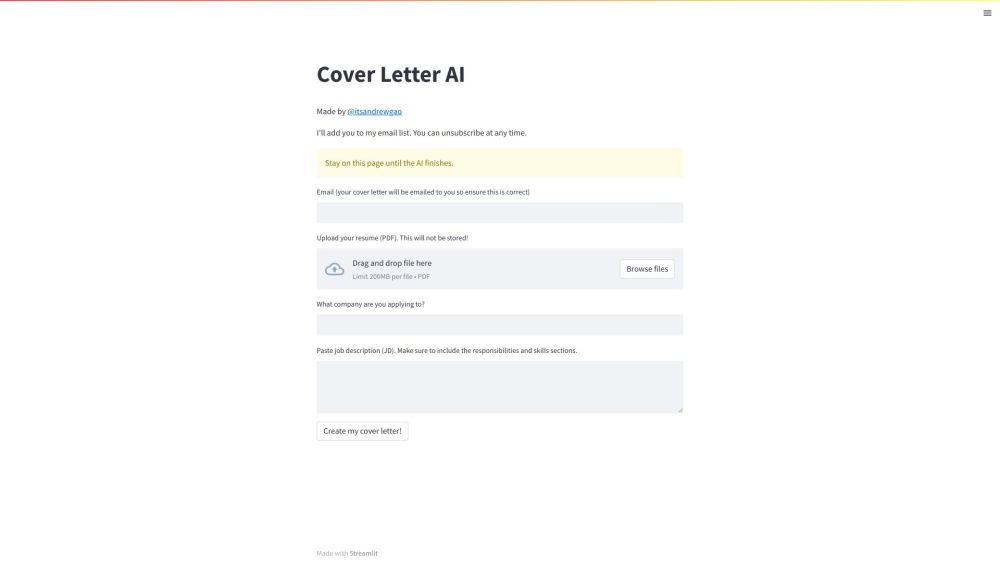
What is Streamlit?
Streamlit is an innovative Python library that makes it easy to build and share custom web apps designed for machine learning and data science projects. It simplifies the process of creating user-friendly interfaces for your models, visualizations, and data-driven applications.
How to use Streamlit?
To get started with Streamlit, you can install it via pip and import it into your Python code. After that, you can leverage Streamlit's wide range of functions to design interactive widgets, create data visualizations, and display results. Run your application effortlessly using the 'streamlit run' command, and see your app in action.
Key Features Of Streamlit
Some of the essential features Streamlit offers are: - Quick and efficient app development using Python - Interactive components for user engagement - Automatic updates to reflect changes in data - Compatibility with popular Python libraries such as Pandas, Matplotlib, and Plotly - Easy deployment across multiple hosting platforms
Use Cases for Streamlit
Streamlit is versatile and can be used for: - Creating dynamic dashboards for data exploration - Prototyping and presenting machine learning models - Developing interactive data visualization tools - Building internal solutions for data analysis and workflow automation
FAQ from Streamlit
What is Streamlit?
Streamlit is a powerful Python framework that lets you create and share interactive web applications, particularly for machine learning and data science. It helps build engaging interfaces for your data projects.
How to use Streamlit?
To utilize Streamlit, install it using pip and include it in your Python script. Use its functions to craft interactive elements, visualize data, and run your app with the 'streamlit run' command to view the output.